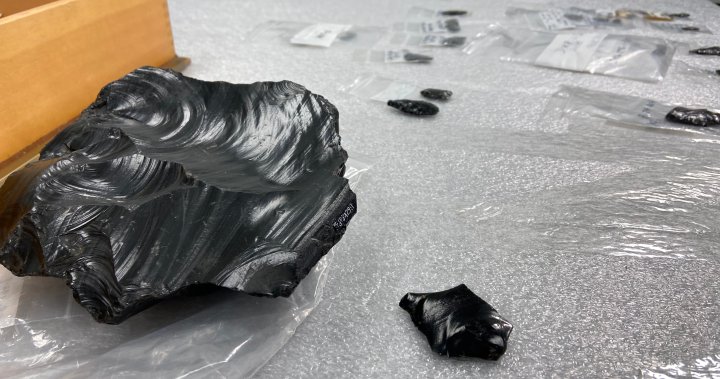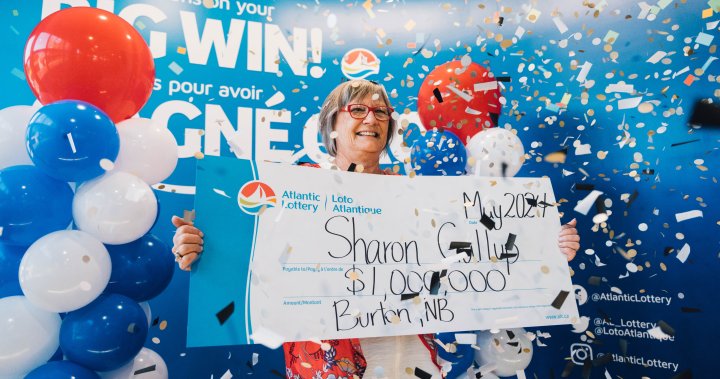An Edmonton couple might be living on a piece of history.
Last year, Jennifer Yeoman and her husband Hector Lomack were doing some landscaping in their yard when they found a curious-looking black rock.
“As Hector was digging out the front, I was out here around and about, and he came to me with a big black rock, and he said: ‘What’s this?’” said Yeoman. “It’s the oddest piece of rock I’ve ever seen in my life. It’s a sheer big piece of glass.”
That black rock was a 4.6-pound chunk of obsidian core — which is volcanic glass that forms when lava cools rapidly with minimal crystal growth — and not usually found in Alberta due to the lack of, well, volcanoes.
The largest obsidian core in the province is on display at the Royal Alberta Museum.
“It turned out there’s only one other rock found that size in Alberta to date, and it happened to be our rock,” said Yeoman.

It’s an extra exciting discovery for Yeoman as she’d always dreamt of being an archaeologist but plans changed when she became a mom.
Now that her kids are grown up, her dream is being reignited.
She brought her findings to the RAM where their archaeology team took over.
Breaking news from Canada and around the world
sent to your email, as it happens.
“We noticed distinctive characteristics that indicated it was human-made and in particular that each of these little semi-lunar bites here are where a flake was struck off,” said Kyle Forsythe, curator of Archaeology of the RAM.
Pre-contact people reshaped or flint-knapped obsidian to make tools like arrowheads.

“If it does happen to be authentic, we will be able to learn more about people’s raw material preferences and situate that within larger trade networks,” said Forsythe.
They do know it had to come from an area with volcanic activity — but fortunately, no two volcanoes are alike.
“Every single volcano has a chemical — it’s almost like a fingerprint,” said Forsythe.
Using what’s called x-ray fluorescent spectroscopy (XRF), they matched that fingerprint to a volcano in southern Idaho.
“That’s actually a source that was used in pre-contact times by Indigenous people in Alberta,” said Forsythe.
“Everything about this piece suggested that it could be a legitimate artifact.”
“We could have been a tool-making centre here for Indigenous peoples,” said Yeoman.

The museum turned to their social media community for more input.
“We got a lot of response from various community members who rightfully identified that there is a fairly widespread flintknapping community in Alberta and so that raised the possibility that this could be a replica that was either manufactured by a student in an anthropology class or possibly some other flintknapper who was doing experimental archaeology,” said Forsythe.
This new information is helping put the mystery together, but more work needs to be done.
“If we had gone to the location and we had found it in situ — which is an archaeological term for in the place where it was resting — depending on what we found there that would have changed our interpretation one way or another,” said Forsythe.
The RAM archaeology team is now planning to return to Yeoman’s yard and turn it into an archeological site. Museum staff will dig it up to look for more clues.
Yeoman will be there, living her childhood dream.
“This is our last great adventure and we’re still adventuring,” said Yeoman.
If you find an artifact in the ground, Forsythe suggest leaving it where it was found, taking a picture, marking the location of the item, and contacting the museum.
“It’s only through virtue of our community relationships, that we’re able to reconstruct the past,” said Forsythe.

© 2024 Global News, a division of Corus Entertainment Inc.





